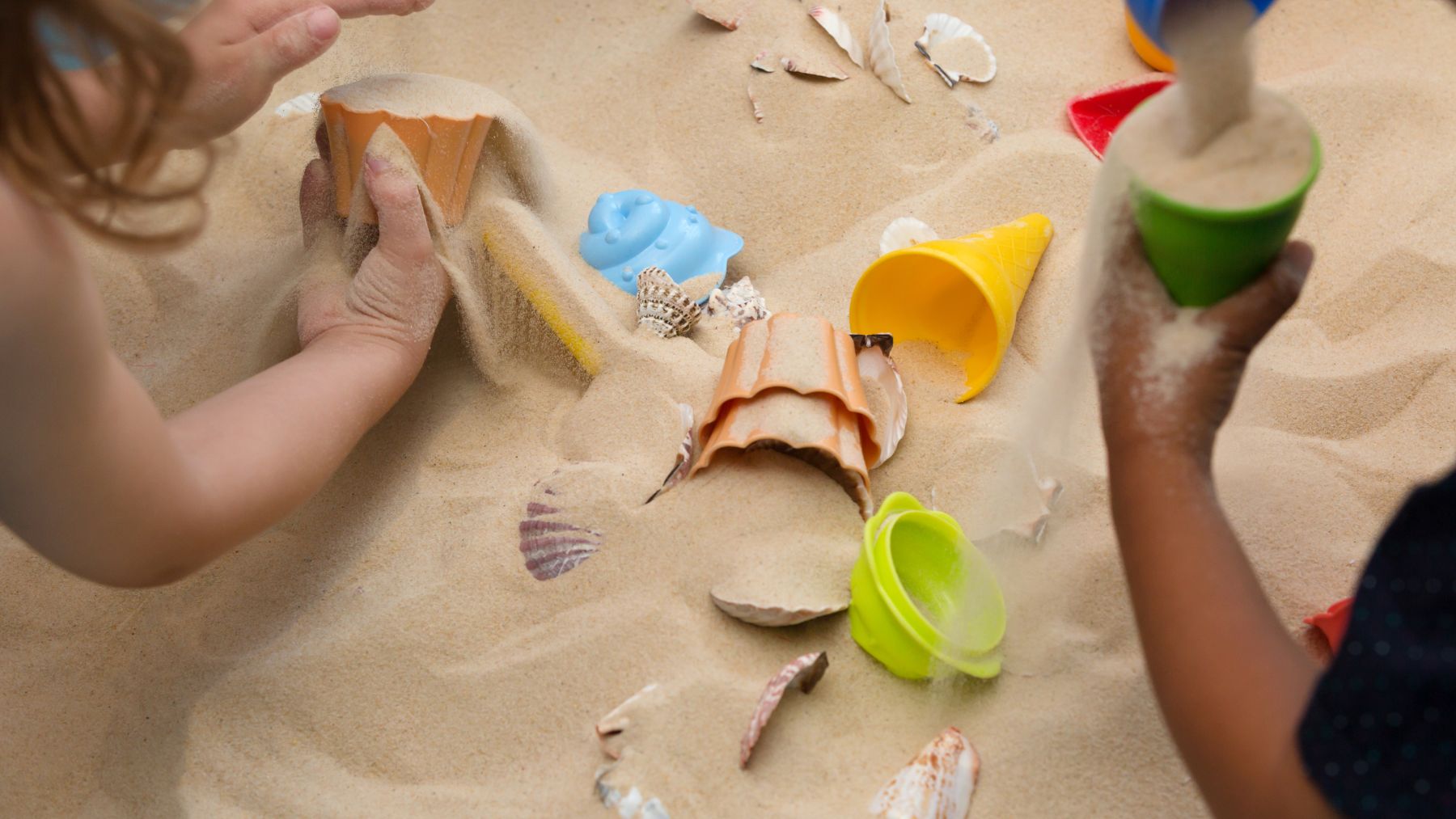Picture this: a group of keen little minds eagerly anticipating an opportunity to learn and explore.
What are we thinking? You don’t have to picture that!
You see it every day at your Centre.
Early childhood education is such a rewarding space to work in as almost everything provides an opportunity for the children to learn and develop.
That’s why it is so important to offer sensory learning experiences.
Your secret weapon for offering more of these experiences? A high-quality multi-seat stroller!
Let’s look at how a simple multi-seat stroller can play a starring role in empowering the children with sensory learning.
Sensory Learning Experiences
In the early years of development, children learn in fascinating ways. We already know that play is a big part of that learning experience. That is partly because they are able to use their senses to process and respond to the world around them.
When young ones have an object in front of them, they are not only establishing how to use the object specifically. They are also developing an understanding of what environment the object exists in, where it is in relation to their bodies, how they should interact with it, how they should move their body to manipulate it, whether it will be hard, soft or some different texture…
The learning is virtually endless.
And that is just a simple interaction for a very young child. As they grow older, language, motor skills, cause and effect, and greater sensory integration will develop. So, the more exposure children have to sensory experiences in their early years, the more developed their sensory integration will be.
What Senses Do Children Engage While Learning?
- Vision: Sight helps children see, focus and filter out things that are unimportant.
- Touch: Tactile touching engages the sensory receptors in the skin and mouth. Touch covers two aspects - the child touching things, or things touching the child.
- Sound: Developing auditory processing helps children learn to hear accurately, recognise sounds and helps them to orientate themselves in an environment.
- Taste: Taste signals whether items are edible or not and develops an awareness of different flavours such as sweet, salty, sour etc.
- Smell: Taste and smell are senses that work hand in hand and are also associated with the part of the brain that forms memories.
- Balance: The sense of balance and motion is all about recognising where you are in an environment and activating the movement of your body.
- Body Awareness: Body awareness is a knowledge of how your body parts are moving and engaging. It includes understanding measured force like pushing or pulling and compression or stretching of the joints for jumping and reaching.
The Benefits of Sensory Learning
Sensory learning engages a number of the children’s senses at one time, giving them multiple opportunities to learn, investigate and develop different ways of thinking.
Here are just some of the benefits of sensory experiences and play:
- Brain Development: Memory is a key component of a child’s ability to learn complex tasks. Sensory play can help to strengthen crucial nerve connections in the areas of the brain responsible for memorising.
- Language Development: Sensory play helps children develop their language skills as they learn in an engaging way. Exploring the look, feel and smell of things around them can help them develop vocabulary and descriptions essential for communication.
- Cognitive Development: Through sensory play, children can establish connections between various objects and materials, distinguishing their differences and similarities. Observation and navigation with their senses can help them hone the cognitive development needed for good decision making and problem solving.
- Motor Skills: Sensory play helps children to hone their motor skills by letting them manipulate objects. Holding a pencil, putting something in a box, or stacking blocks all give children the ability to practice controlling their muscles in the right way.
- Creativity: Creativity is a vital skill for children to develop and sensory play is a way to encourage that. Children can learn at their own pace by observing, exploring new sensory sensations, and making decisions with freedom.
Opportunities For Sensory Learning
“Exploring through [sensory] play supports learning across all the strands of Te Whāriki.”
The more senses a child can use, the greater their ability to interpret and retain information will be. So, creating plenty of opportunities for sensory learning is extremely beneficial for the children at your Centre. Luckily, there are many ways to introduce opportunities for hands-on sensory learning:
- Water play
- Messy play
- Mirrors
- Sand play
- Filling and emptying containers
- Playdoh or clay
- Fingerpainting and colour mixing
Sensory Learning Beyond The Centre
“In New Zealand, the early childhood curriculum Te Whāriki, supports the use of curriculum in the outdoors.” In fact, there is a strong belief that the environment can be a teacher itself. So, creating opportunities for children to get out into nature can help their learning even more.
“Play in natural environments allows for freedom, expression and creativity.” But, regularly getting children out into nature can be challenging for ECE Centres. Unless of course, you have a secret transport weapon like a multi-seat stroller.
Allowing you to safely harness and transport up to four children of varying ages at one time, the KinderPod multi-seat stroller is a fantastic tool for initiating sensory learning experiences. With children riding safely in the stroller, they can practice using their senses in numerous environments to explore the world around them.
Educators can focus on the opportunities for learning without worry for the safety of the children, and they will have everything they need with them thanks to the large storage capacity of the KinderPod.
Want to know more about how the KinderPod can create more learning experiences for the children at your Centre? Then, check out the travel system on our website, or get in touch with our friendly team to ask any questions you may have.


